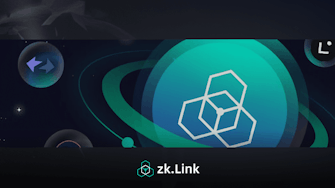
The rise of Uniswap in 2020 marked a significant shift towards decentralization, challenging the dominance of traditional centralized exchanges. As the primary market for ERC-20 tokens, Uniswap brought on-chain price discovery and self-custody to the forefront, reshaping user expectations on Ethereum. Despite the evident progress within DeFi, challenges persist, such as the absence of efficient on-chain markets for BTC, ultimately leaving users with limited choices. Consequently, as the industry grapples with continuously finding solutions for a decentralized exchange that seamlessly combines asset coverage, competitive pricing, and cross-chain capabilities, many projects emerge looking to fill the gap.
Chainflip, a Morningstar Ventures portfolio company, is looking to find solutions to the abovementioned capabilities and is positioning itself to address these critical factors. Given the project's recent Token Generation Event (TGE) and Mainnet launch, this month’s project review delves deeper into Chainflips Just-in-Time (JIT) Automated Market Maker (AMM) protocol, $FLIP tokenomics, and fundraising round. As always, the review will end with analyzing the project’s strengths and potential challenges.
What is Chainflip
Chainflip is a decentralized exchange that operates across multiple blockchain networks. It utilizes a proof-of-stake validator network and uses threshold signing schemes for enhanced efficiency. The project's flagship product is the unique JIT AMM Protocol, designed to provide users with a seamless and highly efficient way to trade digital assets. Chainflip operates under the mission to displace the centralized exchange by becoming the go-to on-chain trading facility for Web3 ecosystems and builders needing cross-chain support.
Chainflip aims to differentiate itself from other cross-chain products on the market. In its lite paper, Chainflip identifies the following main issues currently present in the market:
- Liquidity fragmentation
- Unfavorable pricing and high transaction fees
- Overreliance on incentives
- Suboptimal capital efficiency and user experience
- Alarming degrees of centralization
- High exposure to security risks for users
Chainflip aims to address these challenges by leveraging cross-chain management technology that aligns with the core protocol. This approach maximizes compatibility, allowing users the freedom to create swaps across various chains and protocols while using Chainflip for their trades.
Founding Team, Fundraising, and Recent Successes
Simon Harman founded Chainflip in 2020 as an independent venture within the Oxen Foundation. Over the years, Chainflip Labs has evolved into a team of over 30 members, working as engineers, designers, quants, and analysts. The team operates globally, with offices across Berlin, Dublin, and Melbourne.
The team raised $19.6M from private rounds and another $3.7M from the Coinlist sale in September. From this, they raised $10M from veteran crypto VCs, including Pantera Capital, Blockchain Capital, Framework Ventures, and Morningstar Ventures, along with numerous other backers, whose support ensures the team is well-prepared to address the challenges of the cross-chain sector with a wealth of experience.
$FLIP TGE and Mainnet Launch
On November 23rd, Chainflip completed its TGE across several solid exchanges, including KuCoin and Crypto.com. See the image below for key metrics:
JIT AMM Protocol, Validators, and Product Features
Chainflip employs a Cross-Chain Liquidity Network, utilizing Multi-Party Computation (MPC), specifically Threshold Signature Schemes (TSS). The core idea involves a permissionless network of 150 Validators managing Vaults (smart contracts/wallets) on multiple blockchains, creating a decentralized Settlement Layer. The Chainflip State Chain, a Substrate-based blockchain, acts as the Accounting Layer, tracking balances and executing instructions for a decentralized cross-chain swapping protocol.
The Chainflip Just In Time (JIT) AMM, based on Uniswap v3, operates virtually on the State Chain, simplifying cross-chain support by consolidating swapping logic within the Chainflip State Chain environment. Though logically separated, both systems are controlled by the same Validators in the Chainflip network.
The protocol operates under the following goals:
- Generalized Cross-Chain Capability
- Decentralization
- Useful Product
- Composability
- Inter-Protocol Compatibility
- Security
- Sustained Value Capture
Tokenomics
The FLIP token is the ERC-20 protocol token for the Chainflip decentralized exchange. Despite Chainflip having its blockchain, the multi-chain aspect allows the $FLIP token to be issued on Ethereum for enhanced accessibility and adoption. Staking activities on the Ethereum State Chain Gateway contract transfer these tokens to the Chainflip State Chain for utilization within the appchain environment.
The primary function of the $FLIP token lies in serving as collateral for Validator auctions. Validators, with substantial stakes, earn rewards from block rewards and collectively control liquidity vaults to maintain the state chain for Chainflip. Furthermore, $FLIP is essential for Liquidity Provision and Relaying services to facilitate the execution of instructions on the decentralized exchange. All transaction fees on the State Chain are systematically burned; a 0.1% fee is taken from every swap and used to buy and burn FLIP – which, given enough volume, will burn more FLIP than is emitted to validators.
Our Analysis:
Strengths:
- Chainflip’s protocol is an innovative solution within the cross-chain swap space, and its well-defined JIT AMM is also a great alternative solution to traditional AMMs. Given the project's successful TGE, which doubled on its first day of trading, the industry also seems to have a strong sentiment for this upcoming project. Furthermore, the project is developing in an exciting space within Web3, namely DeFi. In a space where people are trusting CEXs less and less, solutions like that of Chainflip will become more prominent in the future.
- Not only did $FLIP list on the 5 most major crypto exchanges, but it also has solid backing from institutional VC and projects within the space. Furthermore, the team behind the project are Crypto natives and well versed in DeFi.
Challenges:
- Even though Chainflip does not assume the same security risks that a bridge does and is different in design, DeFi projects generally face some challenges, including security issues, especially for the swap/bridges product, as they are most susceptible to attacks. Similarly, the competition between cross-chain swaps is increasing daily as more layer zero projects try to solve the same liquidity issue and give crypto traders a better user experience.
What’s next for Chainflip
In the upcoming month, the team will work on the upcoming 'Berghain' release, which will introduce swapping and liquidity provider features on the Chainflip protocol. This release aims to ensure a seamless swapping experience with accurate pricing and low slippage for supported assets (ETH, DOT, BTC, and more) and all other assets through external Aggregator integrations, consolidating everything in one place.
Later in 2024, the team will work on expanding chain and wallet integration along with gas execution and support.
Find out more about their upcoming roadmap here: https://chainflip.io/roadmap
🌐 Official website: https://chainflip.io/
🐦 Official Twitter: https://twitter.com/chainflip
📜 Blog: https://blog.chainflip.io/
🕹️ Discord channel: https://discord.com/invite/chainflip-community
💬 Telegram: https://t.me/chainflip_io_chat





